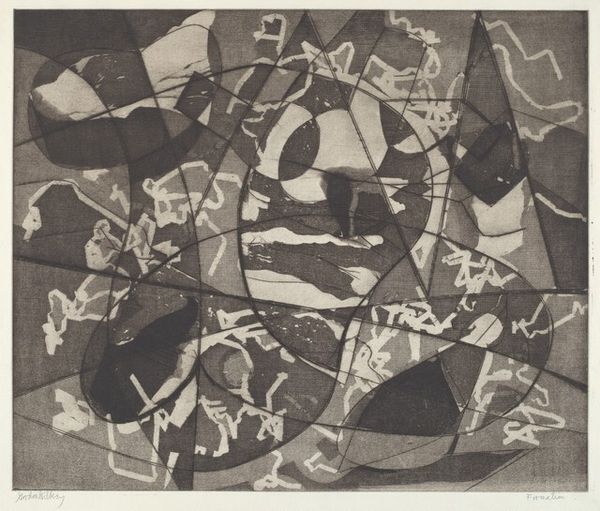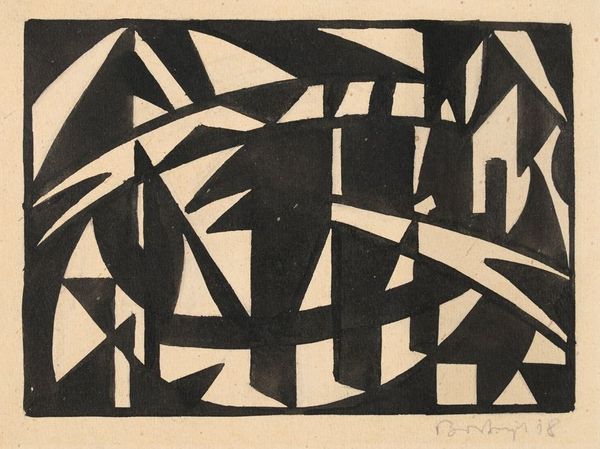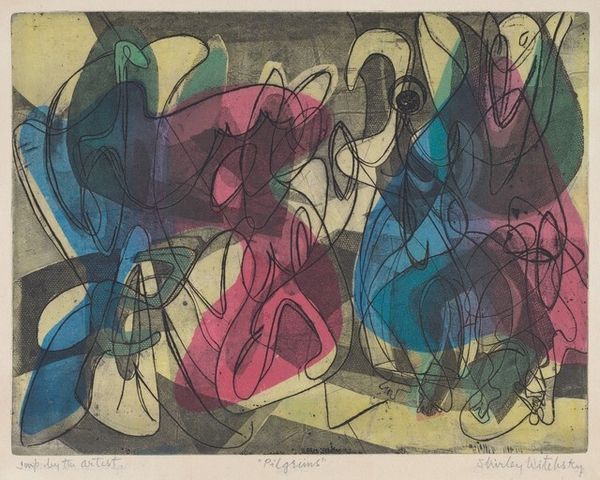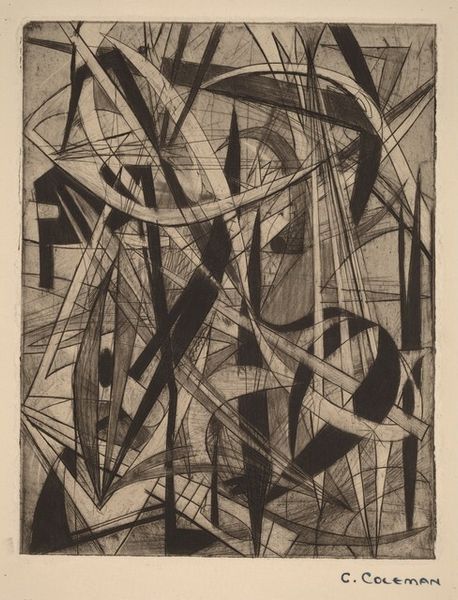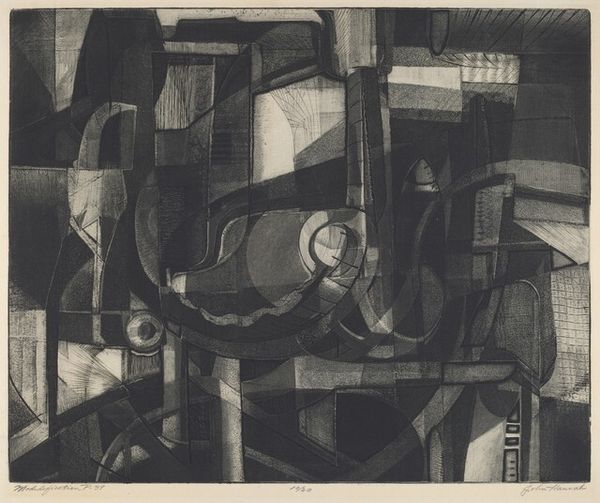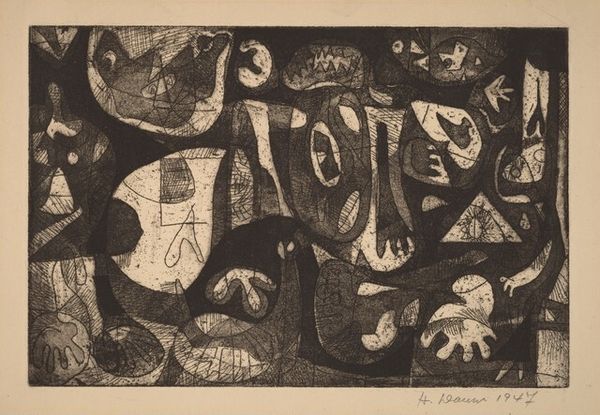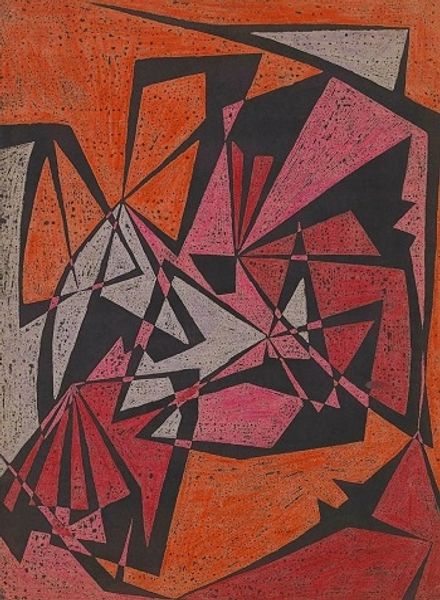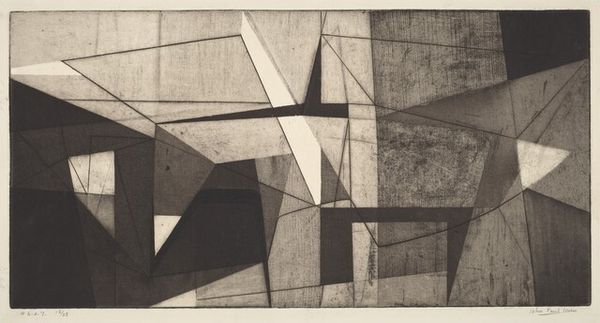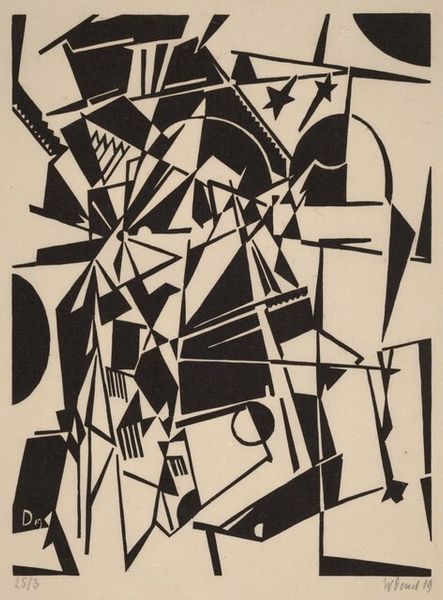
print, linocut
#
abstract-expressionism
#
linocut
# print
#
linocut
#
linocut print
#
geometric-abstraction
#
line
Dimensions: sheet: 22.23 × 28.1 cm (8 3/4 × 11 1/16 in.) plate: 15.24 × 20.32 cm (6 × 8 in.)
Copyright: National Gallery of Art: CC0 1.0
Curator: Right, let's talk about Sue Fuller's linocut print from 1944, entitled "Lancelot and Guinevere". It's a striking piece. Editor: It really is. The immediate impression is one of fractured drama. The stark red and black lines, the geometric shapes—they create a sense of chaos and conflict, despite the clear abstraction. Curator: The artist, Sue Fuller, made the work in 1944, using linocut to create the print. I think it's a mistake to divorce such abstractions from the historical climate, to see this, say, as solely relating to geometric forms; it was produced during World War Two, a time where identity was deeply fragmented. I'm always drawn to interpretations about how trauma and political change can impact art, and I wonder about those possible parallels here. What does the intersectionality of political turmoil mean? Editor: I appreciate that reading. For me, it’s as important to consider the social and artistic movements. We can understand its production in relation to the growing interest in abstract expressionism during and immediately after the war, for example, with European artists emigrating to New York. Curator: The angular, almost shattered, shapes really strike me. Could that angularity echo how these identities have shifted? What could a feminist reading contribute here? Were women involved with these love triangles? This work could address their role, whether to celebrate, reclaim, critique or question their roles as political or relational beings. What possibilities are made when artists focus on abstract subjects like Fuller does? Editor: Precisely! That dynamic interplay, Fuller’s choice of materials, places this print squarely within those discourses, the development of abstraction in a time when people needed art. We can also examine the narrative context she's drawing from and the social perception of Arthurian myths, the institutional value attached to courtly love, and see Fuller perhaps destabilizing such conventional tropes. Curator: A powerful subversion, wouldn’t you say? Viewing it through the multiple, intersectional lenses of the day. Editor: Absolutely. Each viewing deepens its impact, as art should.
Comments
No comments
Be the first to comment and join the conversation on the ultimate creative platform.
